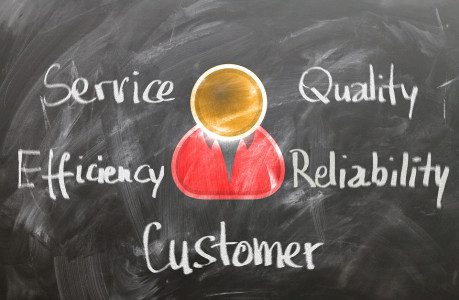How Does Performance Marketing Work?

Performance marketing refers to a type of digital marketing that’s usually result-oriented. It focuses on the marketing part that performs in a way that can be measured, therefore solving the high marketing tension. It is suitable for companies willing to locate their target audience and reach them at scale, as payments are based on the interaction of users with the adverts.
This form of marketing is where the advertiser pays for performance-oriented results to an affiliate. This indicates that the advertiser will pay for every sale, lead, and other actions which are a result of their marketing strategies. Thereby, it is an effective method for managing advertising prices.
How Does Performance Marketing Operate?
Meta and Google, for instance, are primarily used in the United States to run performance marketing campaigns. You can have two sets of keywords running on these platforms. If the first keyword generates more sales, you can shift your budget to only those keywords or expand the budget to generate even more sales. This article will help you learn more about how performance marketing functions. Some performance marketing strategies include:
Cost Per Sale (CPS)
Cost per sale and affiliate marketing requires you to pay for every sale driven by the ad. You’ll only pay if the ad generates a sale. In order to measure cost per sale, you need to divide your entire cost by the total sales revenue you generate. Hence, if your complete monthly cost is around $100,000 and $1,000,000 is what you drive in monthly sales revenue, then your CPS will be 10 cents.
CPC or Cost Per Click
For this model, you pay depending on the click numbers your ads get. The model is an excellent strategy to generate more traffic to the website you own. CPC is a general indication of the cost to bring your viewer right from the ad to your site. For instance, if you set a max CPC bid, that will be your highest among paid on an ad click. The maximum CPC will count as chargeable for every click.
Cost Per Lead (CPL)
Cost per leads works almost in a similar fashion as cost per sales, only that with cost per leads, the advertiser pays when someone signs up for a newsletter, webinar, email, or something else. This strategy only generates leads, and you must follow up with your customers for sales generation. It is the only digital marketing costing model where the advertiser is asked to pay for a pre-established price in case of lead generation.
CPM or Cost Per Impression
CPM refers to the cost an advertiser needs to generate every 1,000 views on your ad. Impressions primarily denote your ad’s views. With this model, you are liable for paying for the thousand views your ads receive. For example, if 5,000 viewers are viewing your ad, you’ll pay five times your actual rate. With almost any ad campaign, the marketer will bid the cost per impression before the presentation of the actual ad.
Cost Per Acquisition (CPA)
Cost per lead is the same as CPA, both work the same way as cost per sale. However, it is more basic than the other two. You will have to pay for the ad when the target audience completes a particular action, such as browsing your blog or sharing their contacts. Cost per acquisition is a critical marketing measurement success that is generally differentiated from CAC by its granular application.
How Does Performance Marketing Work? – Channels
Performance marketing is difficult to function without the help of certain channels. Below are the top-performing channels for performance marketing.
Social Media Advertising
With Social media advertising, you run ads on Twitter, Facebook, Instagram, LinkedIn, and other social media platforms. This model adopts a funnel structure where one campaign targets prospective customers (new people) and another targets people who have visited your website but have yet to convert. However, not all adverts run on social media are performance marketing – some are used for market validation or brand marketing.
Search Engine Marketing (SEM)
Search engine marketing involves running ad campaigns on search engines to drive enormous traffic. The type of searches they target determines its structure. For instance, you can structure your SEM with the product you sell, competitors, and their brands. In cases of performance marketing, cost-per-click remains the primary focus here. In the case of organic SEM, a lot of performance marketers are dependent just on content marketing along with SEO-optimized pages.
Banner (Display) Ads
Banner ads mostly appear on your newsfeed on Facebook or at the top section or bottom of a new web page. However, ad blockers are making banner ads slowly lose their appeal. Nevertheless, you can still use it to display engaging graphic designs, videos, and other interactive content. One can find these ads in the column adjoining your Facebook profile’s newsfeed.
Influencer Marketing
Unlike in the past, influencer marketing is now regarded as performance marketing. With more and more influencers becoming business savvy, they can be used to drive performance. Also, influencer management tools such as Gatsby and influencer partnership platforms have enabled brands to track their influencer partnerships. An influencer is basically a public figure, a content creator, or, most preferably, a celebrity having an enormous audience.
Native Advertising/Sponsored Content
Native advertising works almost the same way as influencer marketing, only that you pay a publication to write about your brand. You should note that some countries require publications to disclose that the content is sponsored. This form of advertising is quite popular on e-commerce websites, and you might have watched them on places like Facebook Marketplace.
Conclusion
Performance marketing is powerful; many popular brands have used it to scale their business with effective results. The secret to performance marketing is understanding key levers, channels, and pitfalls and preventing them later. However, it has some limitations, such as being call-to-action driven; too much marketing can dilute your message and brand. Also, you can’t use it to build your brand.
Read Also:

























Leave A Reply